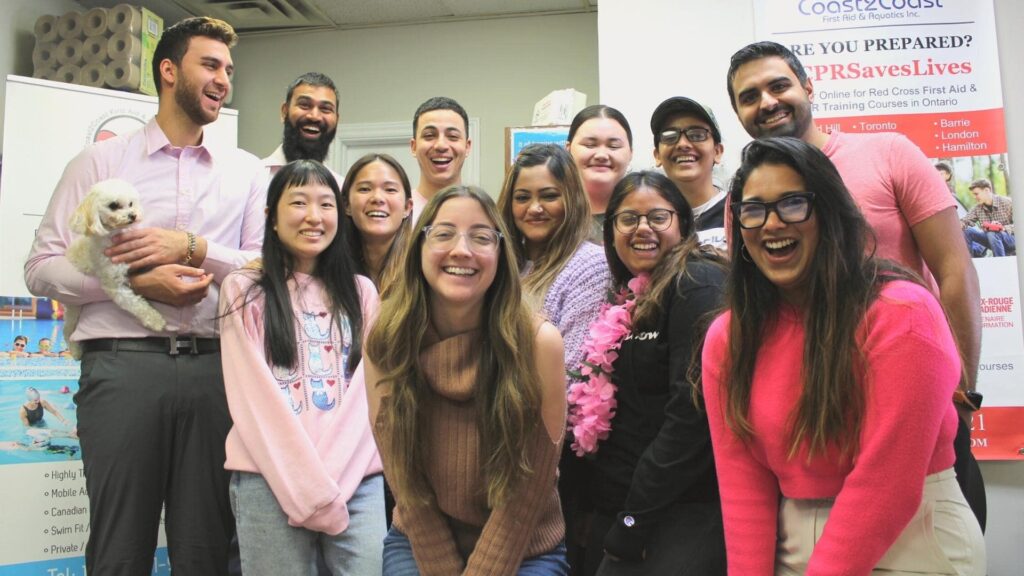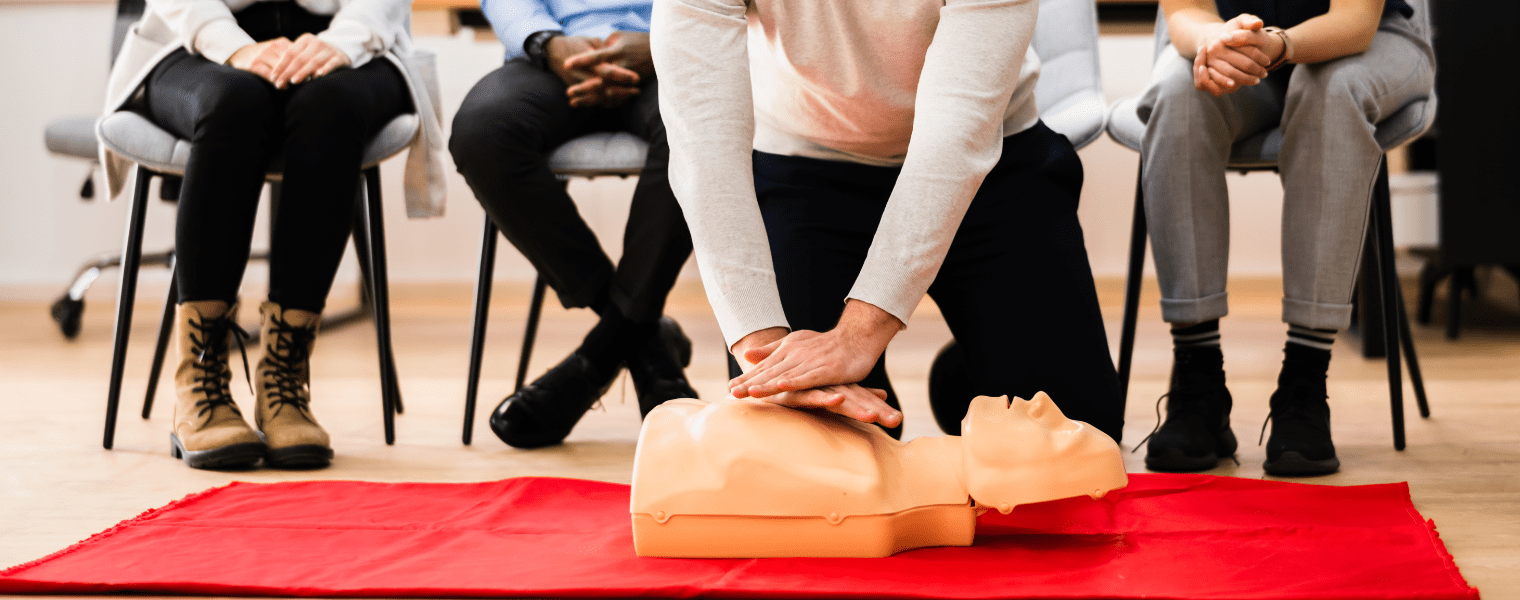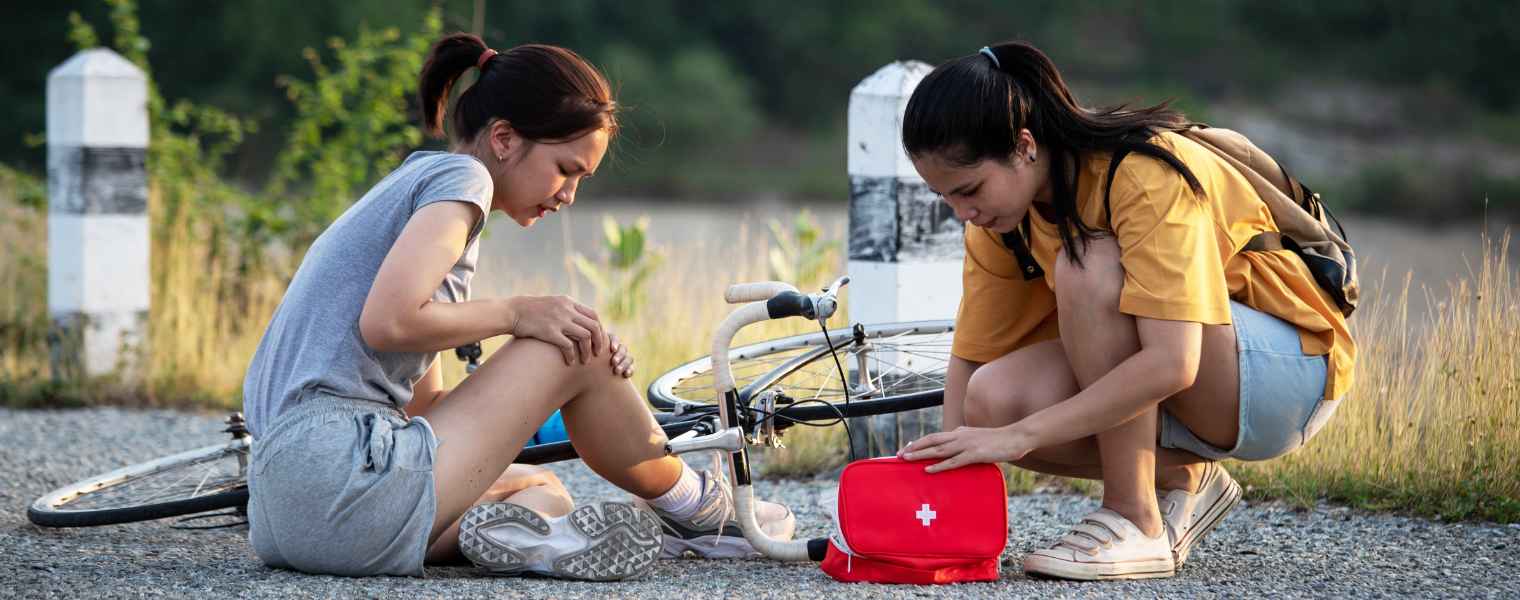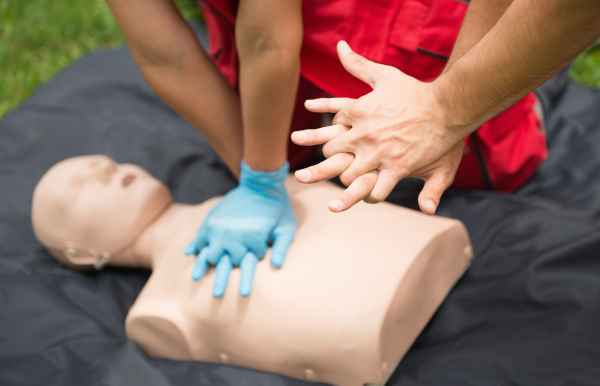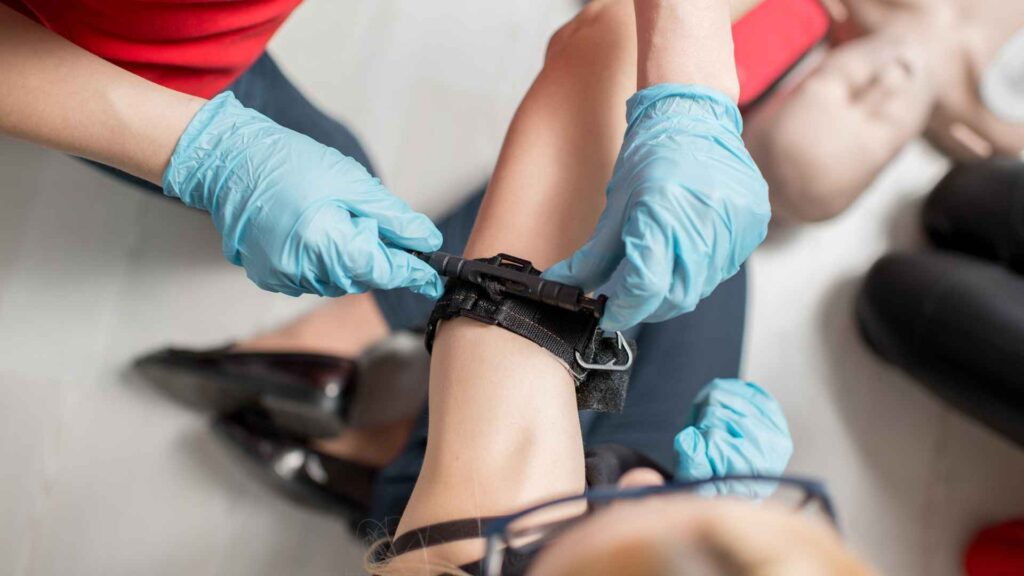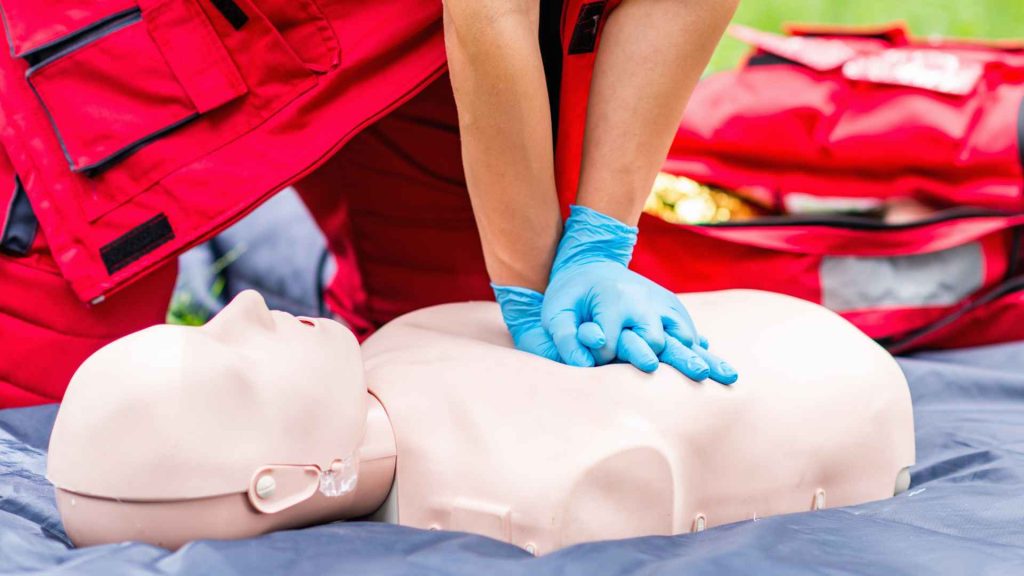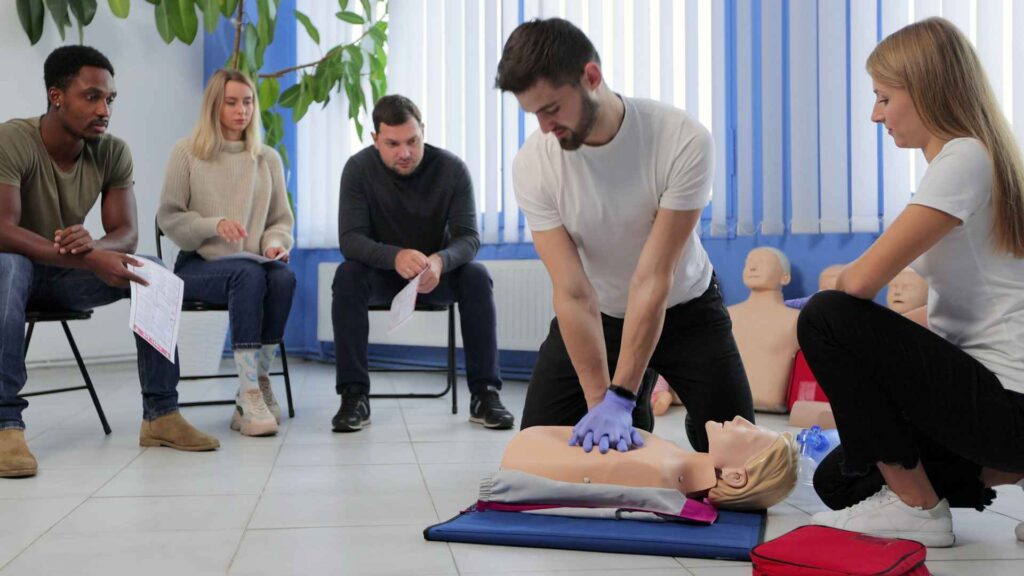IN THIS BLOG
IN THIS BLOG
- What is Breast Cancer?
- Who Breast Cancer Affects?
- Symptoms of Breast Cancer
- How Can Breast Cancer Affect the Body?
- Screening Guidelines in Canada
- Checklist: What to Do If You Find a Lump
- How to Have Conversations with Your Doctor
- How to Prevent Breast Cancer
- How to Support Someone Going through Breast Cancer
- FAQ: Frequently Asked Questions
- Let’s Raise Awareness of Breast Cancer
It’s October again! Breast Cancer Awareness Month. It’s more important than ever to shine a light on early detection, education, and support. At Coast2Coast, we believe in empowering people not just to save lives in emergencies, but to advocate for their own health. This year, we’re deepening our commitment by sharing updated information, practical tools, and community-centred resources that can help you, your loved ones, or someone you care about navigate breast health more confidently.
Disclaimer: This blog is for informational purposes only and is not a substitute for professional medical advice, diagnosis, or treatment. Always consult a qualified healthcare professional regarding any questions or concerns about your health or breast cancer screening.
What is Breast Cancer?
Like all other cancers, breast cancer starts with one or more cells that change within the body. In this case, it forms in the breast. There are multiple types of breast cancer, including invasive ductal carcinoma, invasive lobular carcinoma, Paget’s disease and more.
This disease primarily is caused by a genetic abnormality. However, only 5-10% of cancers are caused by a gene mutation passed down through your mother or father. Instead, 85-90% of breast cancers are caused by abnormalities in genes that occur as a result of aging and the “wear and tear” in the lifestyle.
Donate to the Canadian Cancer Society to support breast cancer research in Canada.
Who Breast Cancer Affects
Breast cancer is the second leading cancer-related death for women and is typically found in women over 50. It is possible to be diagnosed earlier in life, though. Many risk factors may cause you or a loved one to be diagnosed with this challenging disease.
Many factors have to do with genetics. Women with mutations to the BRCA1 or BRCA2 genes have a higher risk of breast and ovarian cancer. These genes help fight breast cancer. In addition to these genes, those with a mother, sister or daughter diagnosed with breast or ovarian cancer have an increased risk. Their risk may also increase if they have multiple family members who have breast or ovarian cancer on either side of the family. And if you have been diagnosed with breast cancer, you are more likely than others to get it again.
Reproductive health plays a role here as well. The longer you are exposed to hormones, the more likely you are to get breast cancer. If you began your period before age 12 and did not begin menopause until 55, you are at higher risk.
Dense breasts can pose a higher risk for breast cancer, too. Breast density is the comparison between fibrous and glandular tissue versus fatty tissue. Density does not stay the same throughout your life. You are more likely to have dense breasts if you are younger, are pregnant/breastfeeding, take hormone replacements or have lower body weight. You can learn more about your breast density by doing a mammogram.

Symptoms of Breast Cancer
Not everyone experiences the same symptoms, but this list is an excellent guide to follow if you have any concerns. Keep in mind some people may not show any signs or symptoms. Some symptoms may not even be related to breast cancer. If you notice any signs, you should visit your doctor as soon as possible. This list is in no particular order:
- Pain in the breast
- Lump in the breast/underarm
- Flaky or red skin around the nipple area or breast
- Discharge from nipple besides breast milk (includes blood)
- Dimpling of the skin on the breast
- A change in size or shape of the breast
If you are concerned about lumps in the breast, please remember that two common reasons women get breast lumps are fibrocystic breast conditions or cysts.
How Can Breast Cancer Affect the Body?
Breast cancer can metastasize (spread) to other body parts, potentially resulting in tumors. With early diagnosis, you can prevent many effects of breast cancer.
Most effects come from the treatment you receive to remove breast cancer. Some typical effects during treatment include:
- Tiredness
- Changes in hair & skin
- Swelling
- Bone & Joint Pain
- Scarring
- Low sex drive and loss of ability to get pregnant

Screening Guidelines in Canada
Screening is about catching breast cancer before symptoms appear, which gives the best chance for effective treatment. Here’s a guide on how screening is currently recommended in Canada:
- For people at average risk (no symptoms, no significant family or genetic history):
- In most provinces, including Ontario, mammograms are offered every two years for individuals aged 50-74
- In Ontario, there is now self-referral eligibility for people aged 40-49, meaning you may request a screening mammogram even without a doctor’s referral
- For those over 74, continuing screening is a decision to make together with your doctor, considering health, life expectancy, and risks
- If you are at higher risk (because of strong family history, prior chest radiation, known gene mutations like BRCA1/2, or other conditions), more frequent screening or supplemental imaging (e.g. MRI, ultrasound) may be recommended
- Screening tests include mammography (the primary tool), sometimes supplemented by ultrasound or MRI for people with dense tissue or high risk
- Importantly: screening is for people without symptoms. If you have a lump, discharge, pain, or any breast change, you should proceed directly to diagnostic evaluation (imaging, biopsy) regardless of your scheduled screening
TIP: Even when screening isn’t available immediately in your age group, stay alert! Report any changes to your doctor. Screening guidelines evolve, and your provider can help you navigate what’s right for your situation.
Checklist: What to Do If You Find a Lump
| Step | What to Do | Notes & Tips |
1. Stay calm and don’t jump to conclusions | Not all lumps are cancer (many are benign cysts, fibroadenomas) | Monitor changes in size, texture, or tenderness |
2. Note the details | Location (which breast, where), approximate size, shape, mobility (does it move), tenderness, skin changes, nipple discharge | Compare with the other side. Is there a similar bump? |
3. Track over time | Does it grow, change, or become painful? Keep a journal or photo if comfortable | Give it short intervals (2-4 weeks) to see if it changes |
4. Schedule a medical appointment | Call your family doctor or clinic. Be clear you found a new breast lump | If needed, ask for a sooner slot because of your concern |
5. Ask for diagnostic imaging | Request a diagnostic mammogram and/or breast ultrasound | These are different from routine screening mammograms |
6. Follow through with biopsy or further tests | If imaging is inconclusive or suspicious, ask about core needle biopsy, fine needle aspiration, or MRI as needed | Get a clear path for diagnosis |
7. Keep your own file | Save imaging reports, biopsy results, referrals, and follow up plans | This helps when you switch providers or get second opinions |
8. Seek second opinions if needed | If you’re unsure or uncomfortable, it’s okay to consult another specialist | You are your own best advocate |
9. Adhere to follow-up schedules | Even benign lumps may require re-checks in a few months | Don’t skip them. Changes over time matter |

How to Have Conversations with Your Doctor
Bringing up concerns with our doctor can feel awkward, but being prepared can make the conversation smoother and more useful. Below are strategies and questions to guide your appointment.
Before the Appointment
- Write down when you first noticed the lump, whether it’s changed, and any other symptoms (pain, discharge, skin changes)
- List questions ahead of time so you don’t forget
- Bring any previous imaging reports or medical records, if available
- Bring a support person (friend, partner) to help listen or take notes, if you wish
Suggested Question to Ask
- What imaging tests do you recommend and why?
- Do I need a biopsy or further tests?
- What are the possible causes (benign/malignant) of this lump?
- How long will it take to get results?
- Where will tests or biopsies be done, and which centres do you trust?
- If cancer is found, what treatment options are available here (locally)?
- What are side effects, risks, and recovery expectations?
- What happens if imaging is inconclusive?
- What is the follow-up plan?
- Who will coordinate care or support (nurse navigator, social worker, support groups)?
During the Appointment
- Ask the doctor to explain things in plain language and slow down if terms are confusing
- Repeat back what you understood to confirm accuracy
- Take notes or ask permission to record audio, if allowed in your area
- Don’t hesitate to say, “I’m uncertain, can I get a second opinion?”
- Ask for written summaries or patient information handouts you can review later
After the Appointment
- Review your notes and write down new questions that arise
- Schedule any follow-up appointments or diagnostics promptly
- If results are delayed, don’t hesitate to follow up (call or message your provider for updates)
How to Prevent Breast Cancer
We discussed different risk factors that may cause you to be diagnosed with breast cancer. Let’s discuss the risk factors you can change to help prevent it:
- Exercise regularly
- Maintain a normal weight
- Caution with hormone replacement
- Minimize alcohol consumption
- Avoid smoking or being around hazardous chemicals
In addition to these risk factors, completing a breast self-exam regularly is also recommended. Stay familiar with your breasts that way, when you complete a self-exam, you will notice any changes such as pain, lumps, changes in size, etc. Make a self-examination part of your routine whenever you get your period.
There are various screening tests you may do as well. Doctors can perform mammograms, breast magnetic resonance imaging (MRI), or clinical breast exams.
It’s important to keep up with your health. See your doctor regularly and bring up any concerns regarding your breasts.
How to Support Someone Going Through Breast Cancer
When someone you care about is navigating a breast cancer diagnosis, your presence and support can make a real difference. Here are ways to help emotionally, practically, and respectfully.
Emotional Support
- Listen with compassion, without trying to fix everything. Let them express fears, sadness, hope
- Acknowledge their feelings by saying things like, “That sounds really hard” or “I’m here for you”
- Avoid cliches or minimizing statements like, “you’ll be fine” or “don’t worry so much”
- Share what you learn (if they want) so conversations feel less isolating
Practical Assistance
- Offer to cook meals, pick up groceries, or organize a meal train with others
- Help with household tasks like cleaning, laundry, yard work, and pet care
- Provide transportation to appointments, especially when treatment or side effects make driving difficult
- Go with them to doctor visits or help take notes/questions
- Assist with childcare, errands, and administrative work (insurance, forms, bills)
- Organize a support calendar among friends/family so everyone helps at different times
- Offer to research resources (support groups, counselling, financial aid) and share options
Respect Boundaries and Communication
- Ask, “How can I help you right now?” and accept if they prefer space
- Be consistent. A quick message or check-in can mean a lot
- Respect privacy. Don’t share details bout their health unless they allow
- Validate their decisions, whether they choose aggressive treatment or more cautious approaches
- Encourage professional support: therapists, peer support groups, social workers

FAQ: Frequently Asked Questions
Yes. While rare, men can develop breast cancer. If a man notices lumps, nipple changes, discharge, or skin changes, he should seek a medical evaluation.
No. A family history increases risk, but it does not mean that you will get breast cancer. Genetic testing (e.g. BRCA) is one tool to assess risk in high-risk cases.
Yes. Self-awareness is helpful. Knowing how your breasts normally feel can help you notice changes. However, guidelines vary, and self-exams are not a substitute for screening. Always follow up on any new change.
Mammograms involve compressing the breast for clearer imaging. This can cause discomfort or pressure, but usually only briefly. If it’s painful, let the technician know. Some can adjust pressure or technique.
It depends. Many centres aim to return biopsy results within a few days to a couple of weeks. Ask your provider for an expected timeline and follow up if delayed.
Yes. Maintaining a healthy weight, regular exercise, limiting alcohol, a nutritious diet, and avoiding tobacco are all helpful. But they do not eliminate risk entirely.
Let’s Raise Awareness of Breast Cancer
At Coast2Coast, we stand in solidarity with everyone affected by breast cancer. This month and every month, we’re committed to spreading awareness, supporting education, and encouraging early detection. Together, through knowledge and compassion, we can make a difference in the fight against breast cancer!
Donate for Breast Cancer Awareness
Help fight breast cancer! Donate to the Canadian Cancer Society and change the future.

